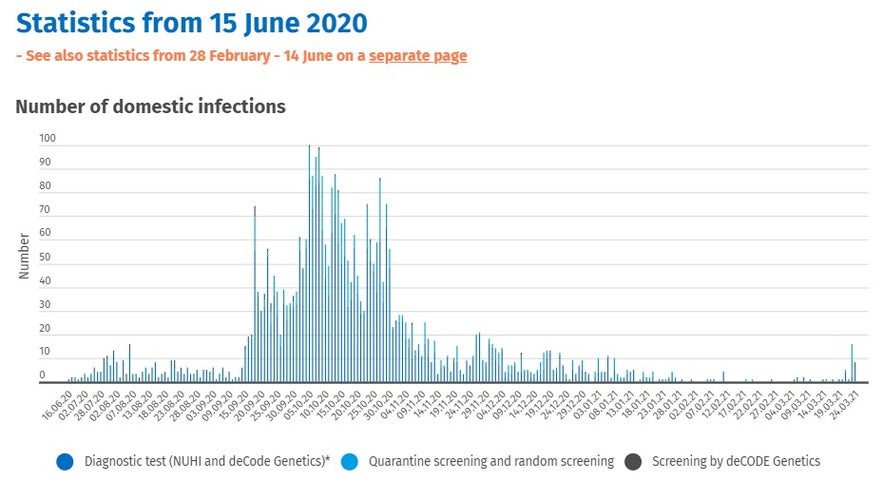
How Iceland Became Safe from the COVID-19 Coronavirus

- Iceland Welcomes the World
- How did COVID-19 get to Iceland?
- Iceland’s First Response
- Quarantines, Lockdowns, and Restrictions
- How Iceland Flattened the Curve
- How Tourism Companies Survived
- The Second Wave Arrives
- The First COVID-19 Vaccine is Authorized
- Iceland Reopens its Borders
- Frequently Asked Questions by Tourists about COVID-19 in Iceland
- Which countries are allowed to travel to Iceland?
- Which airlines are flying to Iceland?
- Is there a lockdown or a ban on public gatherings in Iceland?
- Is everything in Iceland open?
Did COVID-19 reach Iceland, and is it safe to travel to Iceland now? Has everything re-opened, and is life back to normal? How did the government of Iceland respond, and do you have to quarantine? Read on to find out everything you want to know about traveling to Iceland now.
Iceland Welcomes the World
After a year of global pandemic restrictions, Iceland has announced that it will be opening its borders to all travelers who have been fully vaccinated or have completely recovered from the virus on March 26, 2021. It’s a monumental step toward the return of normalcy in global travel, but it did not come without months of precautions and a nationwide dedication to containing the spread of the COVID-19 virus.
Now that you’re able to safely plan your trip to the beauty and wonder of Iceland be sure to check out our dedicated COVID-19 information page, which is updated daily and has the latest details about entering the country.
But before you do, read on to discover how a tiny island in the North Atlantic was able to remain open to travelers and control the spread of a pandemic that shut down the rest of the world.
How did COVID-19 get to Iceland?
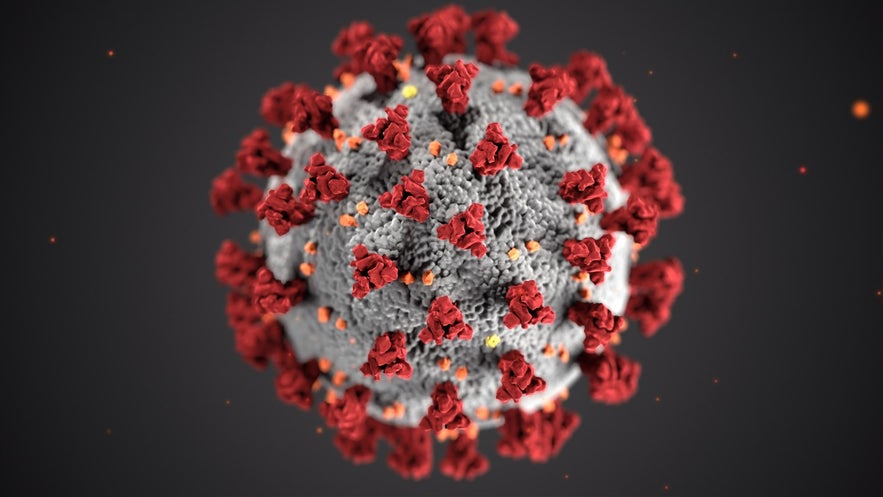 The COVID19 virus under a microscope
The COVID19 virus under a microscope
The first case of COVID-19 in Iceland was discovered on February 28, 2020. The patient was an Icelandic man in his 40s who had recently returned from a ski trip in the Andalo region of Northern Italy. He developed symptoms a week after his return before being quarantined at Landspitali hospital in Reykjavik. In response, the government officially declared an ‘Alert Phase.’ The virus had arrived in Iceland.
Iceland’s First Response
 The Prime Minister of Iceland, Katrín Jakobsdóttir at a press conference. Image Credit: government.is
The Prime Minister of Iceland, Katrín Jakobsdóttir at a press conference. Image Credit: government.is
Aware of the COVID-19 situation developing abroad, the Icelandic government issued an ‘Uncertainty Phase’ on January 31, before the virus was even discovered in the country. This phase was an acknowledgment the virus would possibly make its way to the island, and Iceland began targeted testing for travelers returning from places deemed to be ‘High Risk.’
During this phase, few other countries were testing as many people as Iceland. Over six weeks, the country tested 50,000 people, over 13% of the total population. Every plane arriving from high-risk areas screened passengers, and they were immediately placed into quarantine until negative tests cleared them.
Quarantines, Lockdowns, and Restrictions
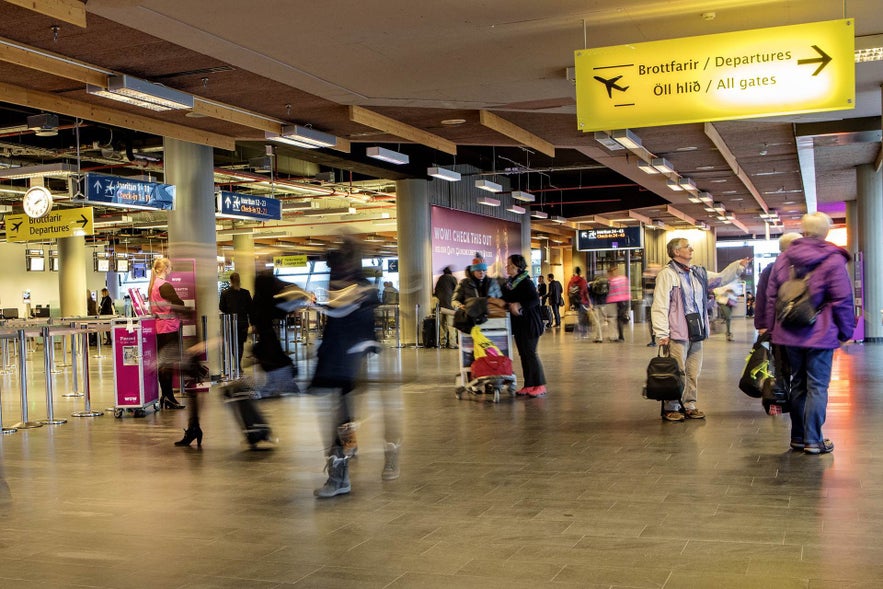 Travellers at Keflavik International Airport. Image Credit: government.is
Travellers at Keflavik International Airport. Image Credit: government.is
On March 1, testing confirmed two more cases of COVID-19. Both patients were in their 50s and had returned home to Iceland via Italy. Later, six more cases were diagnosed, and the list of ‘high-risk areas’ increased to include parts of Austria and Germany. The Icelandic government issued an official statement that detailed severe penalties for those who violated quarantine protocols, including three months' imprisonment.
Within a week, approximately 400 people were in home-quarantine, and healthcare workers had tested 330 people. The testing confirmed that 35 people had contracted the virus. The next day Iceland recorded the first four transmissions of the virus within the country. The first patient to be hospitalized happened three days later, on March 11, when the total number of infections had risen to 90.
 An overhead shot of downtown Reykjavik during social distancing. Image Credit: government.is
An overhead shot of downtown Reykjavik during social distancing. Image Credit: government.is
The government then called a press conference where representatives announced that schools and universities would close along with the beginning of a ban on gatherings of over 100 people.
By the time the public gathering ban went into effect, the Icelandic response to the pandemic had begun to focus on early detection, contact tracing, and social distancing.
By mid-March, the entire world had been declared a ‘high-risk area,’ and residents of Iceland were discouraged from traveling abroad unless absolutely necessary. The Icelandic government also encouraged Icelanders outside of the country to return home as soon as possible.
On March 24, a ban on public assembly of more than 20 people went into place at midnight. The new guidelines required any business that wasn’t able to keep a tight 2-meter distance between all people at all times to close.
Many businesses that could operate without face-to-face contact allowed employees to work from home, and almost overnight, the way locals went about their daily lives changed. Like in the rest of the world, airlines canceled flights, and the nation’s border authorities put strict quarantine procedures into place.
 A screenshot of the official website covid.is which details important information in 9 languages.
A screenshot of the official website covid.is which details important information in 9 languages.
Iceland’s small population and community-minded spirit made social distancing incredibly manageable compared to larger nations. People simply adapted almost overnight to their new way of life.
There was a calm among the people in Iceland compared to news reports from around the globe. People arrived at the grocery store, maintained a social distance from everyone else as best they could, and patiently waited for a security guard to let them know when it was their turn to enter the store.
There were few complaints from people, and Icelanders simply accepted that these procedures were needed to slow the spread of the virus.
How Iceland Flattened the Curve
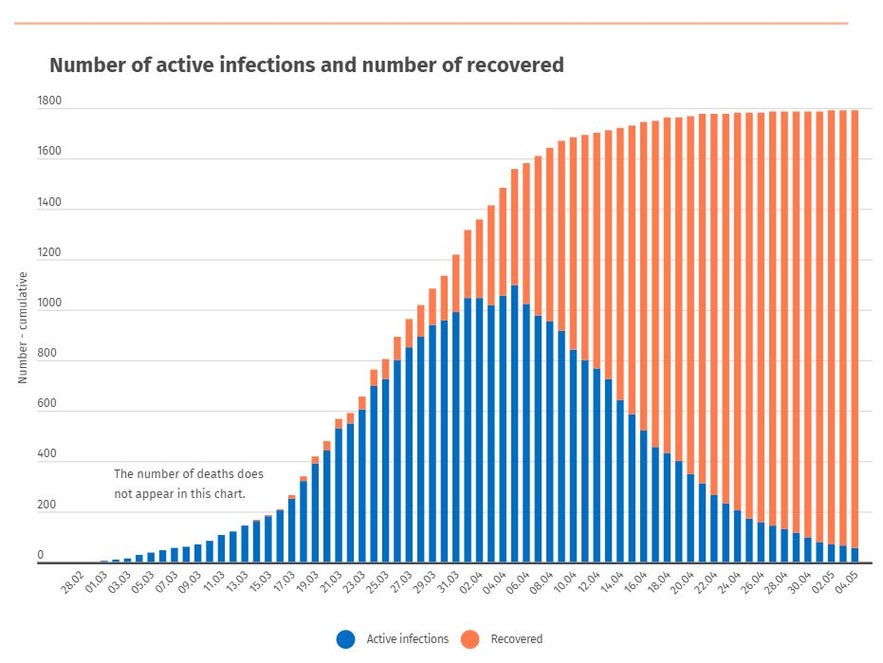 The curve of COVID19 infections in Iceland. Image Credit:covid.is
The curve of COVID19 infections in Iceland. Image Credit:covid.is
Iceland was one of the first countries in the world to begin flattening the curve. Flattening the curve of infection rate, preventing an overwhelming of the nation’s healthcare services, leading to fewer deaths. Flattening the curve meant that the pandemic would last longer, but the mortality rate would be much lower because hospitals could treat patients more effectively.
 The curve of the number of infected people in Iceland as of May 9, 2020.
The curve of the number of infected people in Iceland as of May 9, 2020.
By the beginning of April 2020, the Icelandic government had released the Rakning C-19 app for smartphones, which would trace its user’s movements. This app was one of the first in the world, and it enabled professionals to track possible infections of COVID-19 more effectively. Almost 40% of the population downloaded it within days of its release.
By mid-April, Decode Genetics was working tirelessly with the Icelandic government to provide free voluntary testing. Decode also collated their data into a study that helped show that most infections were being spread by ‘silent carriers,’ or those who showed no symptoms.
The testing results in Iceland helped the world understand the virus and how to slow the rate of infection to flatten the curve.
How Tourism Companies Survived

Although many countries closed their borders completely, Iceland never officially did. Even at the peak of infection, travelers from places outside the ‘High Risk’ areas could self-quarantine for 14 days on arrival and enter the country.
At the end of March 2020, the Icelandic government acknowledged that the tourism industry would suffer in response to travel bans worldwide. Parliament announced a $1.6 billion response package to ensure the survival of one of the most valuable sectors in the country.
A large part of this package ensured the wages of those who work in the tourism industry. The government allowed businesses to reduce staff hours to 25%, effectively cutting operational costs of tourism-based companies. The remaining 75% of wages were to be paid by the government so businesses could cope with the temporary loss of income.
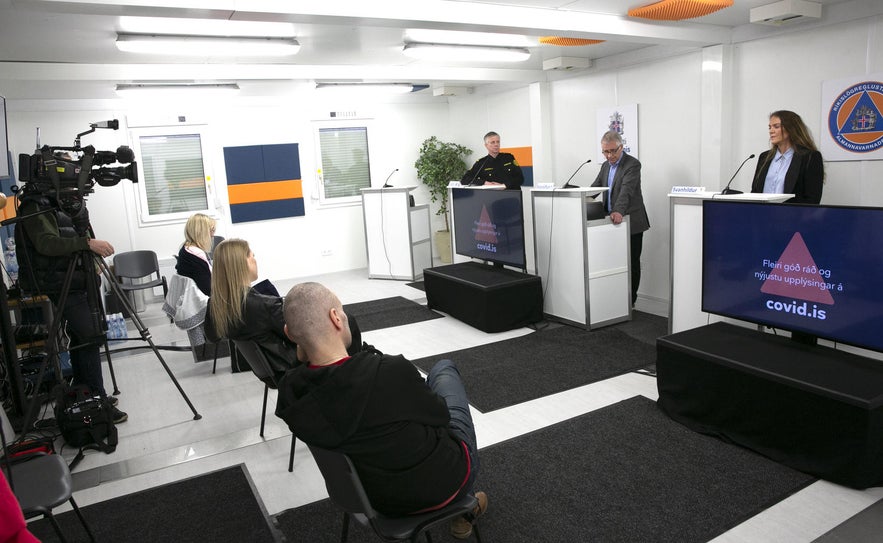 The Icelandic Government announcing measures to assist companies during COVID19. Photo Credit: Icelandic Police Service.
The Icelandic Government announcing measures to assist companies during COVID19. Photo Credit: Icelandic Police Service.
While the pause of this crucial industry meant some people lost their jobs, Iceland’s robust social welfare system afforded unemployment benefits to all permanent residents. Compared to larger nations, the quality of life for those affected by the business impact of COVID-19 was much better during this period.
Many Icelandic companies successfully transitioned their employees to working remotely during the heaviest restrictions on gatherings, allowing many jobs to continue during even the most stringent health guidelines.
The Icelandic government also applied measures to ensure travelers dealing with Icelandic tourism companies wouldn’t lose money. The tourism board insurance covered the small number of bankruptcies that happened.
Icelandair has been offering refunds to travelers who are unable to come to Iceland because of COVID-19. Guide to Iceland likewise honored all refunds and rescheduling for trips that travelers had booked before the pandemic. Most people who were planning to visit Iceland simply opted to change their travel plans to a later date, a time that is fortunately now on the horizon.
The Second Wave Arrives
Svandís Svavarsdóttir heilbrigðisráðherra Image Credit: Stjórnarráðið
As anticipated by scientists, a second wave of increasing COVID-19 infections began in August after a summer of low infection rates and mild social restrictions. Many of these infections were traced back to tourists who did not follow all the rules of quarantine.
The Icelandic health authorities immediately began implementing tighter restrictions in response to this second wave, ultimately limiting public gatherings to a maximum of 10 people and capping business hours and capacity usage for cultural events and health and fitness facilities. Likewise, border authorities tightened conditions for entry by implementing double-testing and quarantine.
These measures and nationwide compliance with the recommended health guidelines allowed the nation to quickly regain control of the spread of COVID-19, preventing numerous infection cases and deaths.
The First COVID-19 Vaccine is Authorized
To the relief of the world, Pfizer-BioNTech filed for FDA approval for Emergency Use Authorization on November 20, 2020. They were the first pharmaceutical partnership to complete the Phase III clinical trials needed to provide the data proving their vaccine’s safety and efficacy.
Since this announcement, national health authorities have approved multiple vaccines for emergency use and are administering them worldwide.
Iceland received its first vaccine shipment on December 28 and began vaccinating its residents on December 29. By the spring of 2021, the country had fully vaccinated almost all of its most vulnerable age groups and frontline healthcare workers and projects the rest of the population will have access to the vaccine by July.
Iceland Reopens its Borders
 Prime Minister Katrín Jakobsdóttir announcing the lifting of restrictions at a press conference. Image Credit: government.is
Prime Minister Katrín Jakobsdóttir announcing the lifting of restrictions at a press conference. Image Credit: government.is
As Iceland’s population worked diligently to control its infection rate during 2020 and the beginning of 2021, the government also put into effect a rigorous screening process at the border. Entry into the country in the second half of 2020 required a recent negative test obtained before departure, followed by a test at the border, a five-day quarantine, and then a second negative test result before visitors could travel freely within the country.
This procedure remains in effect for unvaccinated visitors. However, the Ministry of Health announced on March 16th that beginning on March 26, 2021, travelers from all countries who are able to present certified proof of being fully vaccinated against COVID-19 or had already recovered from the virus and now have the necessary antibodies can now forgo this process.
As Iceland’s Chief Epidemiologist, Thórólfur Gudnason, explained, “When people are protected against the same disease, with the same vaccines that are produced by the same companies, there is no medical reason to discriminate on the basis of the location where the jab is administered.”
With this announcement, Iceland has made it clear that it is once again ready to welcome the world to one of the most incredible and safest places to visit. As the global population begins its recovery from a year lost to the pandemic, it can feel secure in making Iceland’s unique culture and stunning natural splendor the first stop on its new travels.
The time to explore the world safely and inexpensively is now, so start planning your trip to the Land of Fire and Ice today.
Frequently Asked Questions by Tourists about COVID-19 in Iceland
Below are some frequently asked questions about COVID-19 in Iceland and guidelines for those traveling here.
Image Credit: covid.is
Which countries are allowed to travel to Iceland?
On March 16, 2021, Iceland announced that it would lift restrictions on March 26 for visitors from all countries who could provide proof of complete vaccination or COVID-19 antibodies.
Travelers who are citizens of EEA/EFTA countries who have not been vaccinated or recovered from COVID-19 may still enter the country by submitting to the border’s dual-testing process, including a five-day quarantine between tests.
On May 1, 2021, the Icelandic border will begin applying the European Centre for Disease Control’s color-coded system to incoming visitors. Travelers arriving from European nations deemed “low-risk” and coded green or yellow will be able to forgo quarantine procedures by presenting a negative PCR test result.
Which airlines are flying to Iceland?
Iceland’s flag carrier airline, Icelandair, has been consistently running flights throughout COVID-19 to and from destinations such as Amsterdam, Boston, Copenhagen, Paris, and London. Other airlines, such as Wizz Air, Lufthansa, EasyJet, and Air Baltic, have already started flying again or are planning to soon.
You can visit Keflavik International Airport's Airlines and Destinations page for the most current information on airlines and flights traveling to Iceland.
Is there a lockdown or a ban on public gatherings in Iceland?
There is no lockdown in Iceland; however, there are limits on the number of people allowed to gather in public and at cultural events. Any gathering must happen in a place where people who are not related or closely connected can maintain a distance of at least 6.5 feet (2 meters). Face masks are obligatory when people cannot maintain this distance.
For the latest information on the public gathering limits, visit our page dedicated to daily COVID-19 updates to help you monitor the current guidelines of local health authorities.
Is everything in Iceland open?
Iceland has successfully managed to remain open to travelers throughout the pandemic with varying levels of preventative restrictions. On January 13, 2021, the Icelandic health authorities began cautiously easing these COVID-19 guidelines in progressive phases, starting the process of returning society and business to normalcy.
In addition to the social-distancing protocols, local businesses, restaurants, accommodations, and tour operators continue to follow disinfection best practices to ensure that the public’s health and safety remain the top priority.
The Icelandic Ministry of Health is monitoring the infection rate while the vaccination process continues and will adjust the guidelines as needed.
関連記事
アイスランドは物価が高い? お得な旅行時期と節約のコツ
アイスランドは物価が高いと聞くけれど、どれくらい高いの?そんな方のためにアイスランドの通貨から、平均的な物価、節約のポイントまで、アイスランド旅行の「お金」にまつわる疑問にずばりお答えします! アイスランドの氷河や滝、山、温泉、間欠泉、ブラックサンドビーチなど、雄大な自然を一目見てみたいという方はたくさんいらっしゃるのではないでしょうか。お金がないからと二の足を踏んでいる方もご安心ください...もっと読む
アイスランド旅行の一番安い時期|お得に旅を楽しむコツ
アイスランドに一番お得に行けるのはいつ?航空券が一番安いのは?避けた方がいいハイシーズンはある?などなど、アイスランド旅行のお金にまつわる様々な疑問にお答えします。アイスランドに行きたいけれどお金が心配、という方は是非お読みください! 美しい自然に独特の文化。いつかは行ってみたい憧れの国アイスランドはしかし、物価が高いことで有名です。外食もお酒も、ホテルもツアーもレンタカーも高く、他のヨーロ...もっと読むスマホで便利!アイスランド旅行に役立つアプリTOP 9
日常生活にますます手放せないスマートフォン。家族や友達と交流手段でもあり、旅行中に最新情報をチェックするにもとても重要な役割を果たします。天気予報やオーロラの情報等、アイスランド旅行中に役立つ様々なアプリをここで紹介します! ありとあらゆる情報はスマートフォンに入るこのスマホ時代。旅の思い出を残す写真の撮影、道に迷う時の地図確認やお買い物をする前の為替レートのチェック、スマートフォンはまさに頼も...もっと読む

アイスランド最大の旅行アプリをスマートフォンにダウンロード。旅のすべてを1か所で管理できます。
アイスランド最大の旅行マーケットプレイスをポケットに。スマートフォンのカメラでQRコードを読み取り、表示されるリンクをクリックしてください。電話番号またはメールアドレスを入力すれば、SMSやEメールでもダウンロードリンクを受け取ることができます。

